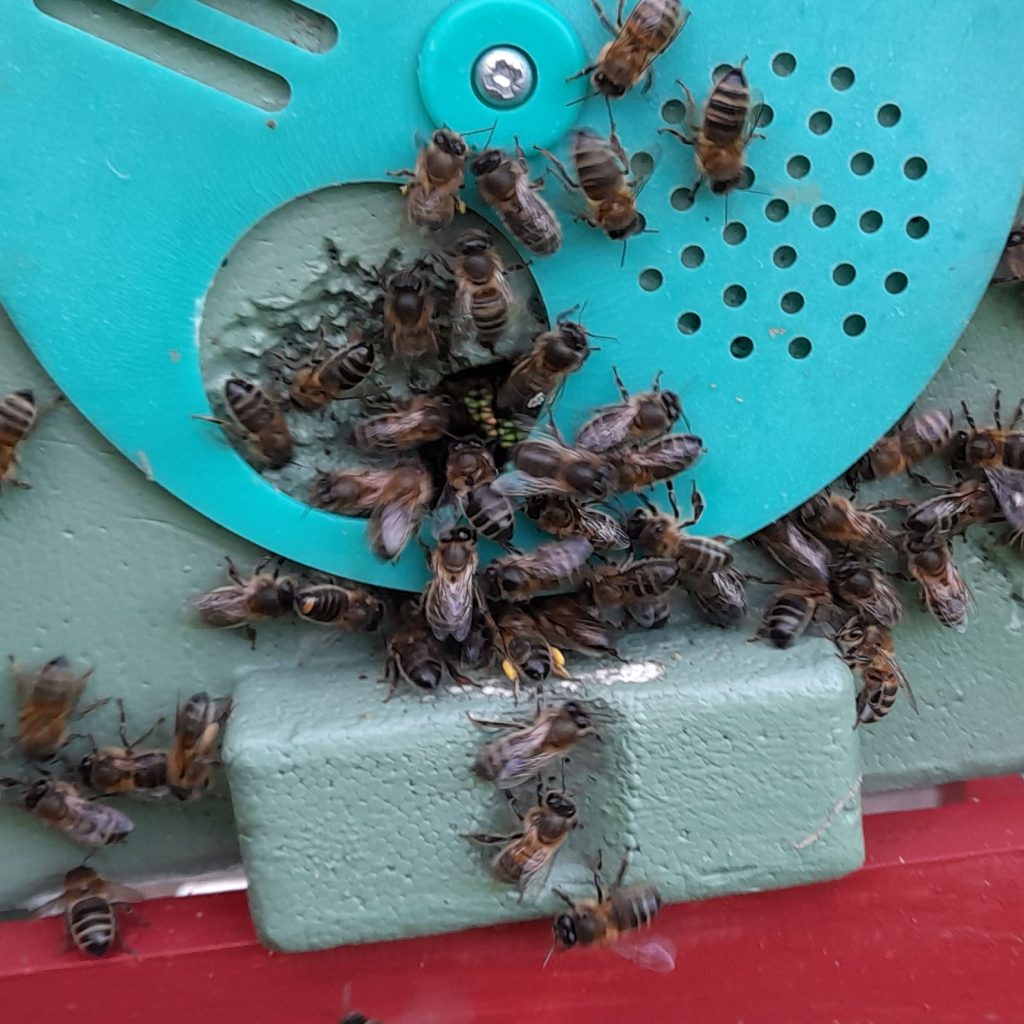
It’s mid December and the temperature swings every couple of days. From way down around 4 degrees C last week to 11 yesterday, and the bees are collecting viburnum and mahonia pollen by the legful. The Varrox Eddy did its stuff and brought some varroa to the floor in all hives, though not more than 30 at the most in any one hive.
Fondant.

All but one colony, overwintering in a poly double storey nuc box, has fondant above the brood frames. I’m experimenting to see how long hive number 2 will take to use up their stores before I need to (if I do) feed them. At the end of summer there were 10 brood frames with brood and honey stores, and 5 shallow super frames full of honey stores. On October 17th they weighed 28.54 kg (62lbs). To weigh them I unstrapped the hive and used my hive tool to assist me levering up the back away from the hive stand to slip in the Millerbees luggage scales. I doubled the reading of 14.27kg (as per instructions) to reach the total estimated weight.
This week the colony weighed 13.21 kg (26.42kg) so has lost 2.12 kg in 10 weeks.
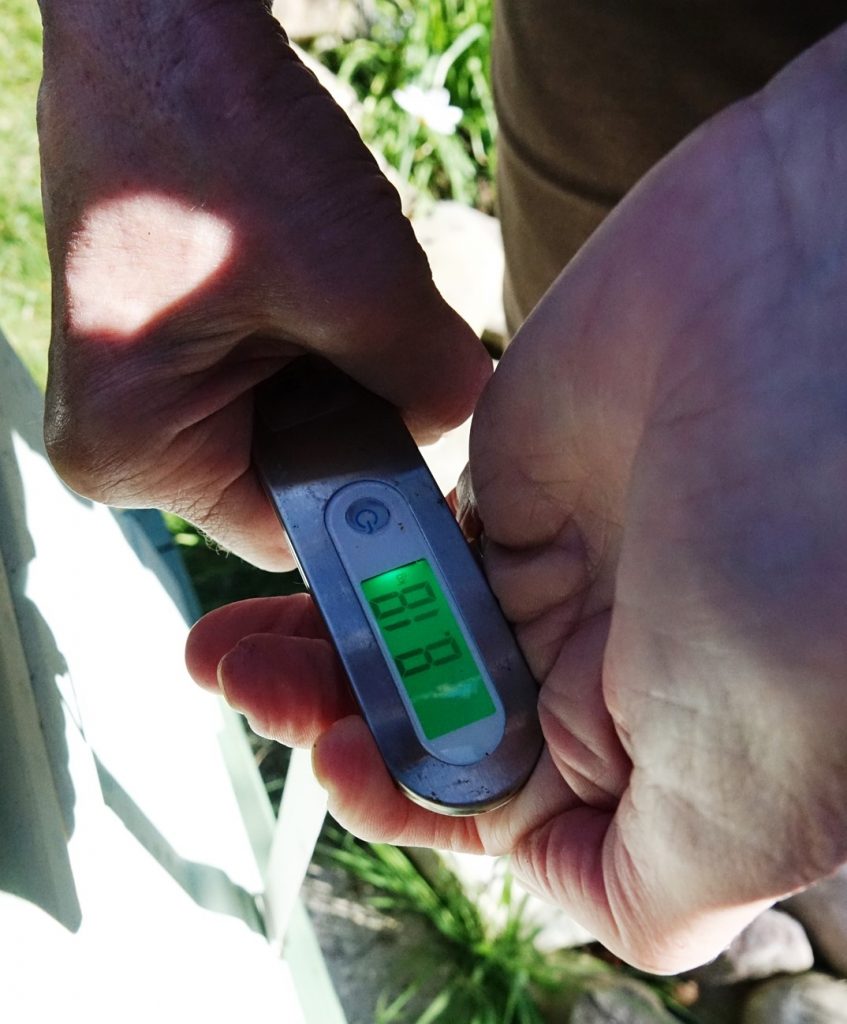
Drones Evicted.
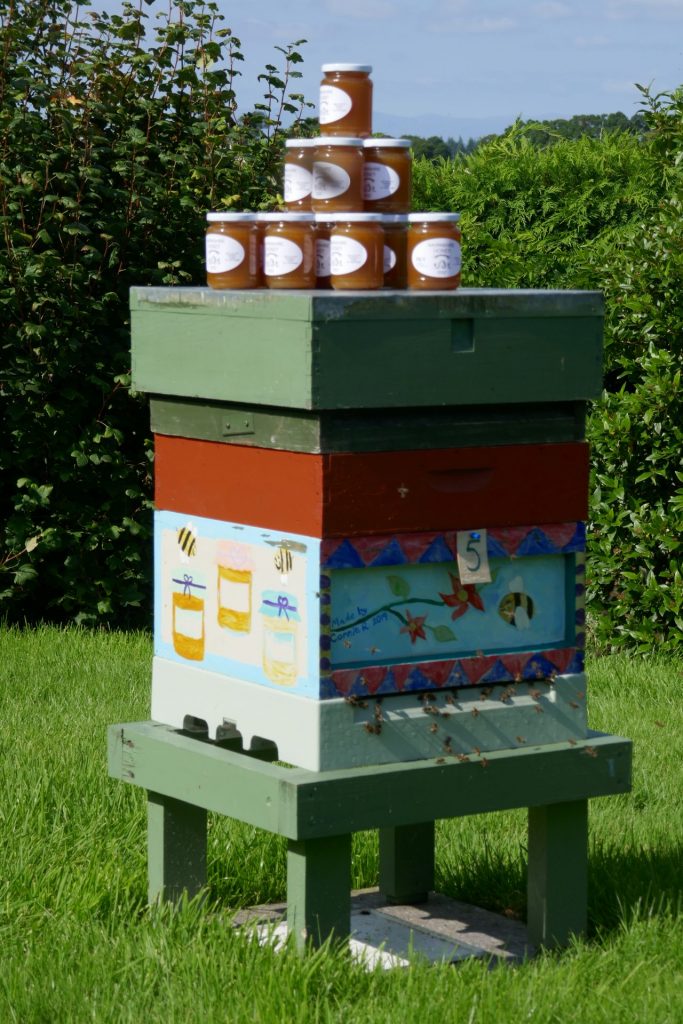
The drones in colony 5 are still being evicted. I’ve never seem this continue so late in the year and I’m hoping that they weren’t trying to get a queen mated late in the season. This was the colony that I didn’t check the records on carefully and they swarmed twice this year, so perhaps they just had a lot of drones inside? We shall see. I have high hopes for rearing queens from this lovely dark colony that flies in all weathers and low temperatures.
Records.
I’ve been reviewing records and making plans for next year. Having had the problems with the swarm bringing in CBPV, and others raising varroa levels in the apiary when I’m trying to reduce my use of varroacides (to nil eventually), I’ll not be keeping any swarms next year. I’ll raise some queens in May from grafting and continue montoring varroa and looking for signs of hygienic behaviour.
Walking.
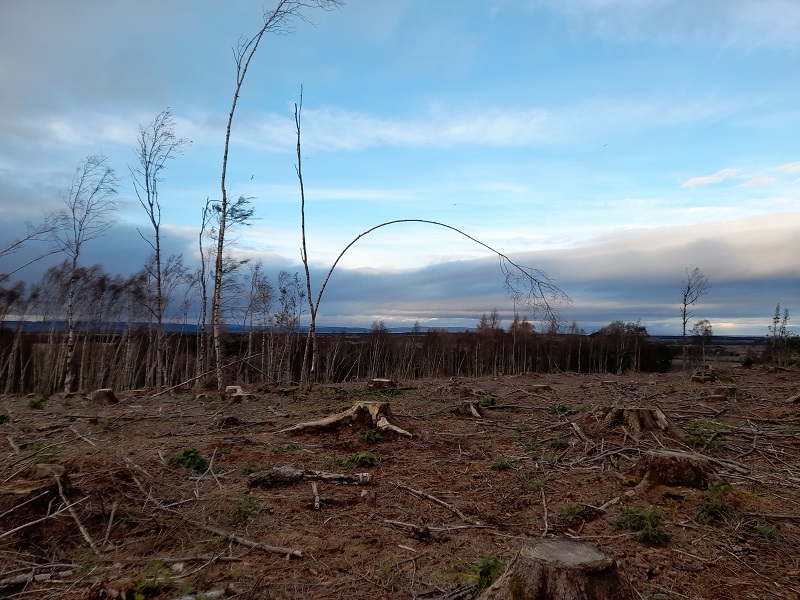
Luckily for me the bursitis that curtailed my walking for most of the year has resolved and I’m off out walking 3 miles a day again. My favourite walk is up to the cross roads on the way to the wild bee tree because of the way both the light and darkness turn the leafless trees into works of art. I love the way these birches light up even a dark day with their white papery bark. This forest was clear felled but for some birches, and some very large old oaks and sycamore just close to a settlement of houses. It seemed odd to suddenly remove all the shelter that kept these old stalwarts in place for so many years. A few days ago the strongest gales uprooted 3 emormous trees that fell towards the houses scraping a friend’s roof and damaging some tiles. I hear the chain saw whining every day and notice the fallen trees getting shorter.
All Seasons Sea Swimming.
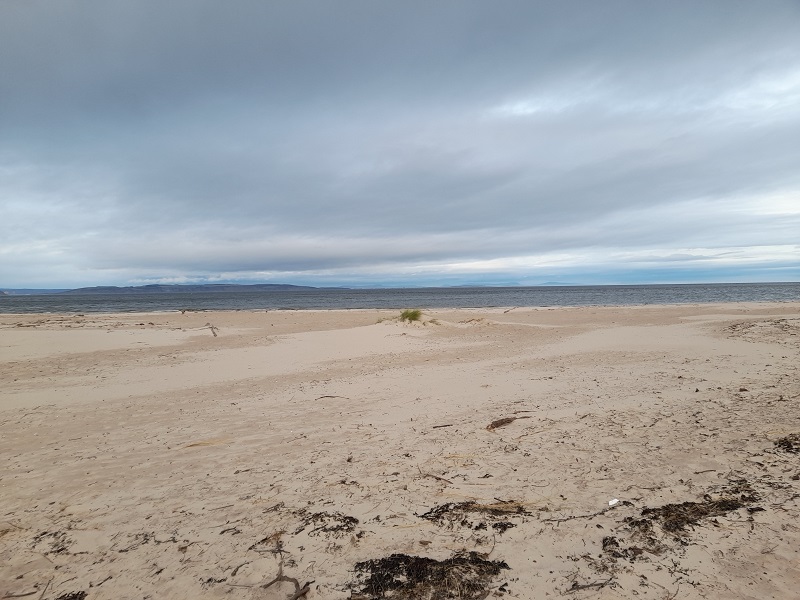
One of the joys of living near the coast, and the cleanest beaches in the UK, is being able to jump into the sea whenever I feel like it. I’ve never been swimming all year round till a neighbour suggested we try it this year, and, so far so good. Armed with neoprene hat, gloves and socks makes it possible to swim even for a few seconds on the coldest day. This week with the air temperature at 7 degs C, I swam for half a minute at least, and if felt great though my neck was the coldest part of my body and I wondered if they made scarves for swimmers. People ask why I do it and one of the reasons is for the sense of adventure without going far from home. It feels great nafterwards and I always wish I could spend more time in the water but I’m not stupid!
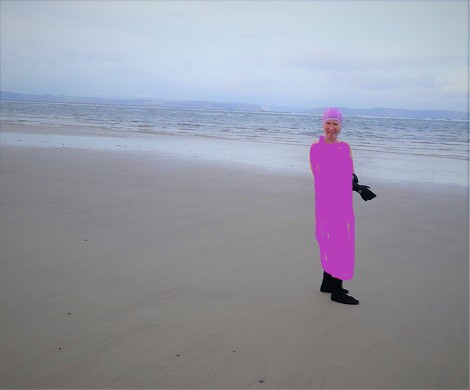


Please could you tell me where exactly you bought the hive weigh scale from? Was it in the UK? What website? I can’t find one. Thank you for all the information you provide.
Hello Elaine. I bought the scales from Miller Bee Supplies in the US, but only because I was buying a blue mesh jacket for summer at the same time. You can buy here in the UK almost identical luggage scales that will work well too for about £7.99. See@ https://www.amazon.co.uk/Digital-Luggage-AA-Suitcase
While the drones were all evicted some time ago here in Wiltshire, it is the wasps that have been a menace in my home apiary. I took part in both sections of the Big Wasp Survey in July and August when wasp numbers were well down on 2020. It seems that their nests were still active then and it was well on into October before they started to take an interest in my hives. They did so with a vengeance with two seemingly strong hives succumbing. Wasps were still in evidence last week when the temperature was 2℃ but the remaining hives were defending well!
This was not good to hear, Richard. Wasps lingered a bit longer here than in usual years but not like this. So stressful for the colonies. I wonder if you will review hive entrances in light of this? They don’t seem to easily get into hives with the concealed slit entrances in the top of the porches. Vita Europe sell them for use against Asian hornet. A friend made a couple for me. The only problem I found was not a large enough entrance if you have to use Mite Away Quick Strips (formic acid) and so you would need to prop open the bottom brood box for a day.
Late drone evictions here on S. Vancouver Island too Ann, still unsure on why, perhaps different weather systems this year. Hope you enjoyed your swim, reminds me of swimming in my younger days in the Pentland Firth, Caithness! Now I wish we had those neoprene suits…..
Hello Gordon, thank for sharing this as kind of reassuring and probably just the weather system. It must have been nippy in the Pentland Firth too. I haven’t considered a neoprene suit because I would probably get hyothermia trying to peel it off!
Another beekeeper that does the winter swim 😍. My husband a life long beekeeper started last year January with a neighbour and friend. Same outfit as you. They go now for 8-9 minutes, started last year with three.He says the cold neck has to to with how you go into the water, try to go in very slowly. And afterwards they have “hand warmer packages”
Hello Maria, thank you for that useful tip. I will try it but will have to change my approach. Going in quickly was my strategy for actually getting under without procrastinating and giving up.
If you go slow you body adjust ,after 90 seconds you body getting num and you can stay longer in ,put you head under for 1 second on the end before you left the water and dry off quick,are you doing it by yourself or with friends? Leen ,husband of Maria
Hello Leen and thank you for the useful tip which I will try next time. I never swim alone no matter how tempting the water is.
Gosh, Ann! When we lived in Lossiemouth, we never went swimming; you are very brave.
John and I had drones in a hive one November; it was fun watching them gang up on wasps, at the entrance despite not being able to sting them. So glad your bursitis has calmed down. Take care x
Hello Margaret, I’ve lived near the sea for years and have never been in regularly but its amazing how much one craves adventure and doing something different during covid restrictions. This could have created the upsurge of interest in sea swimming, or,to put it trendily, wild swimming.
Good old drones and thank you for that piece of info which will be useful for my next PPT “It’s a Drones’ Life”.
I’m waiting for my amazing new book on pollen in honey identification, written by your good self, to arrive. Northern Bee Books estimate arrival today but the postie will not stagger up the path with it till around 6pm.
Thank you for arranging that. Watch out for the review on Friday. !!!
I have planted lots of winter flowering honeysuckle, there are three different species, for the warmer winter weather. It flowers from the end of the ivy into March and while it looses flowers in the cold snaps they come back fast. My bees and I don’t like the smell of viburnum though always keen to hear what works for others.
Hello Tristan. I’ve had winter honesuckle on my to-plant list for a while as it seems to be a lovely plant to have around but currently letting the bees make the most of what I have around just now, and the viburnum has grown enourmous and in now almost part of the hedge. It is not the heavily scented pink bodnantense but I’ve had my eye on that as well.It is always full of bees when I admire it along the roads in a neighbour’s garden.
Lonicera x purpusii is the most common and has a dense crop of pollen yielding flowers.
L fragrant and L Standishii, the parents, are both very worthwhile but bigger. I have found Viburnums prone to die back but are but both are pretty indestructible otherwise. Common box at the end of winter is often overlooked as well.